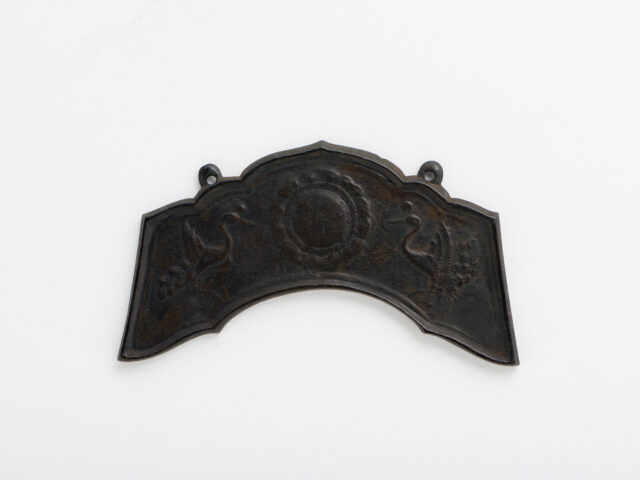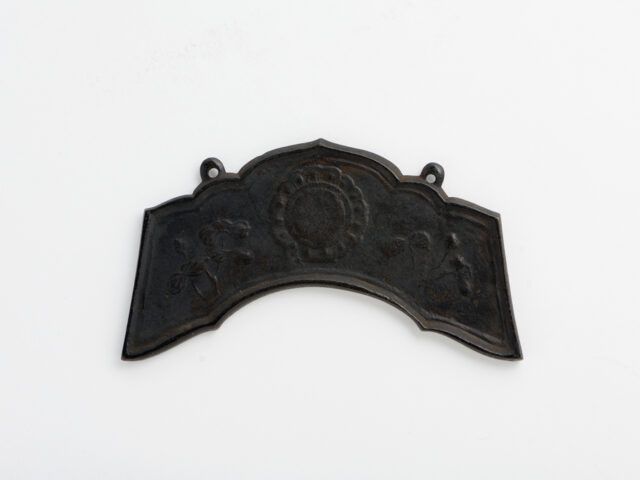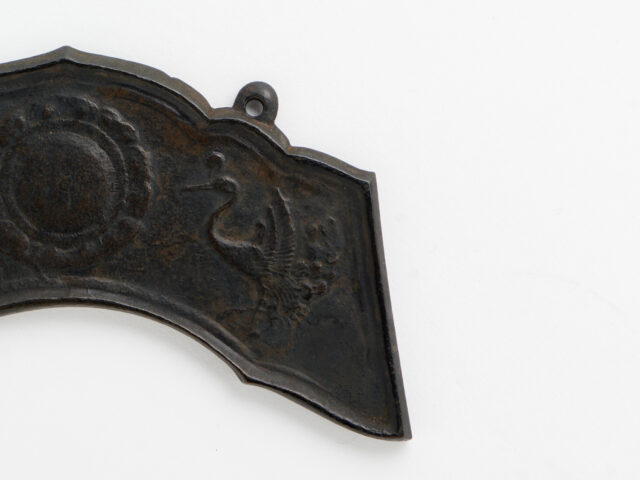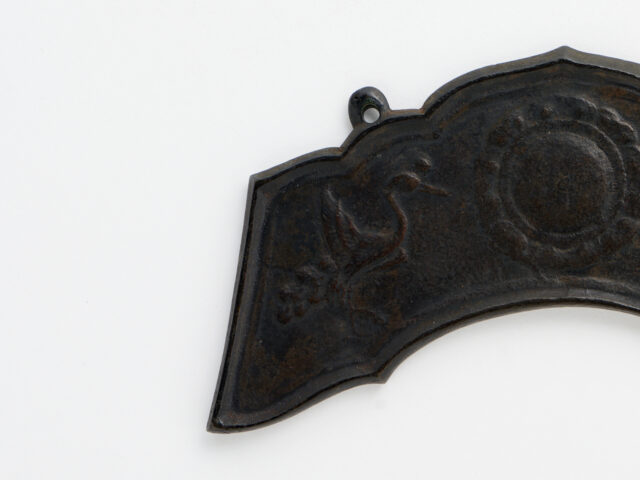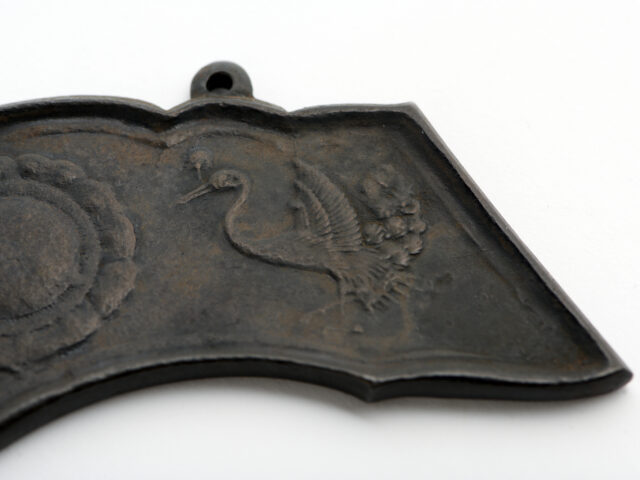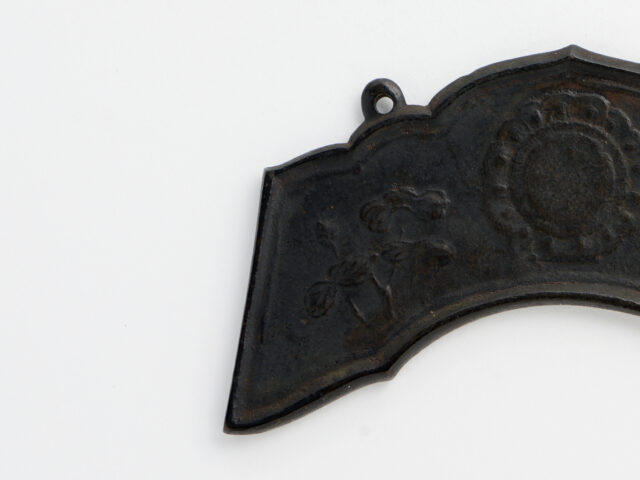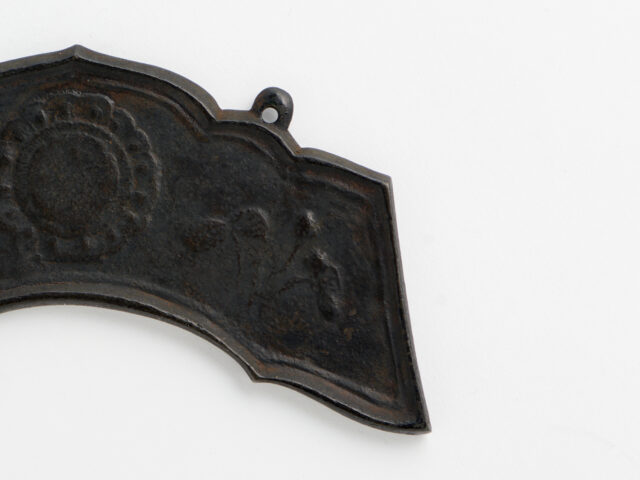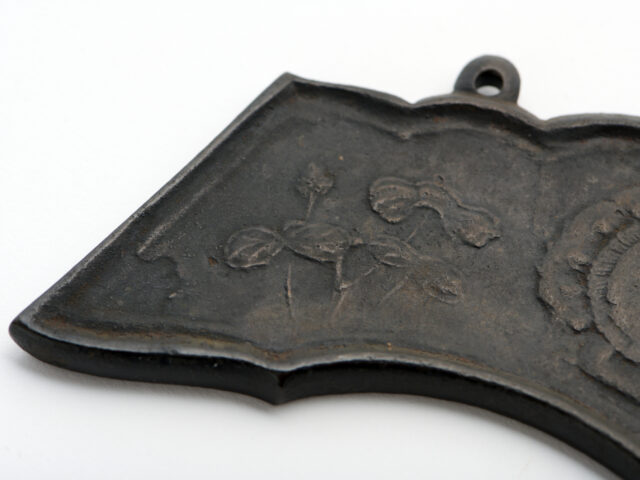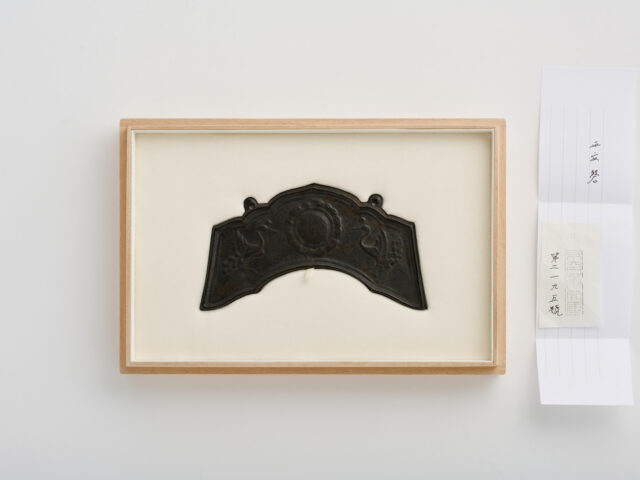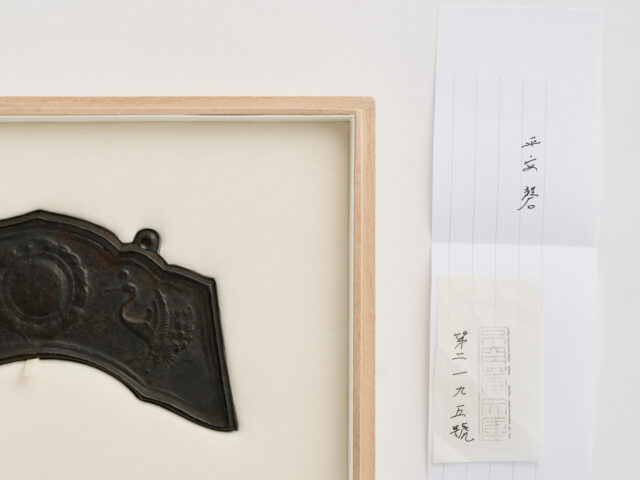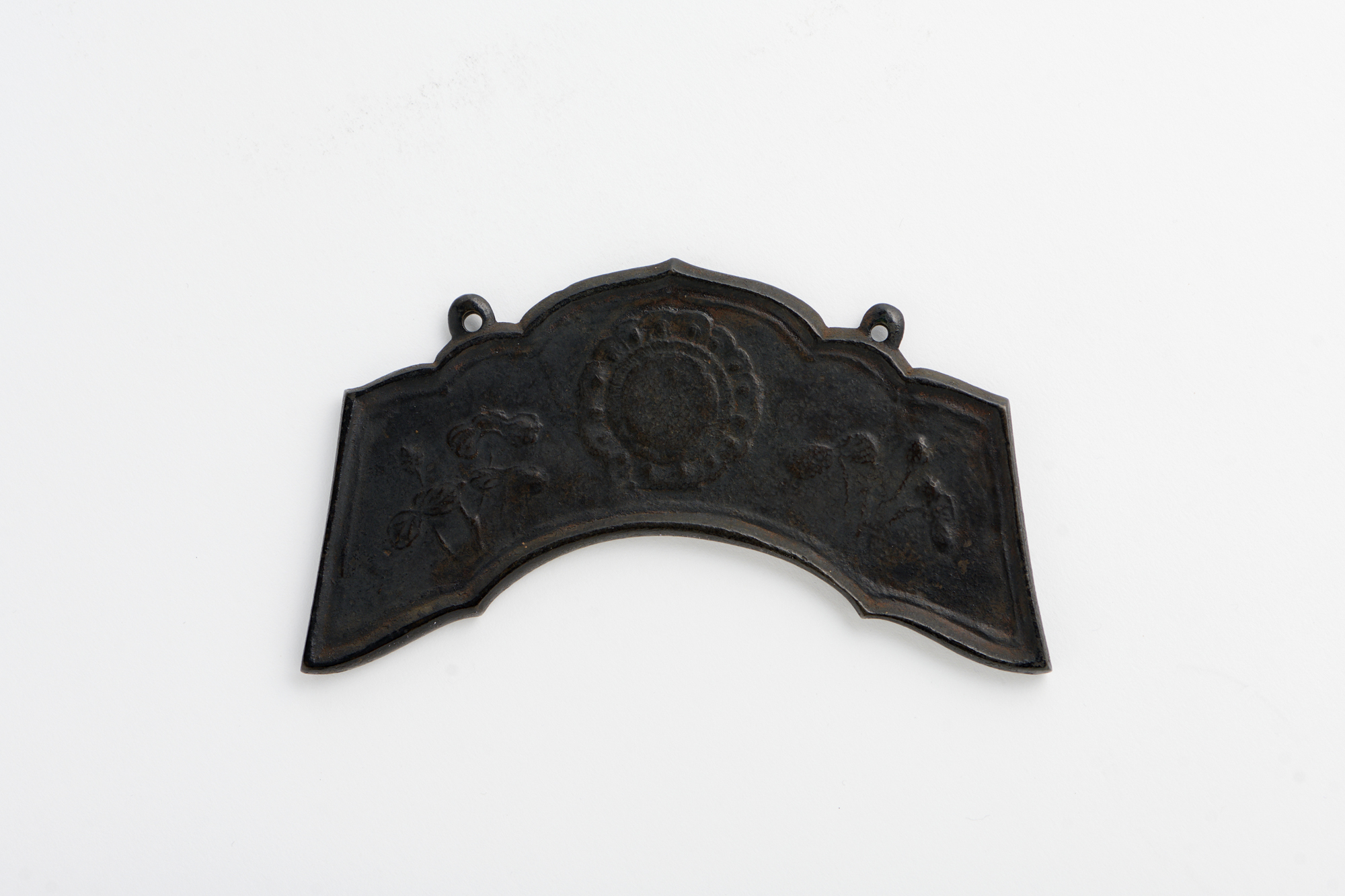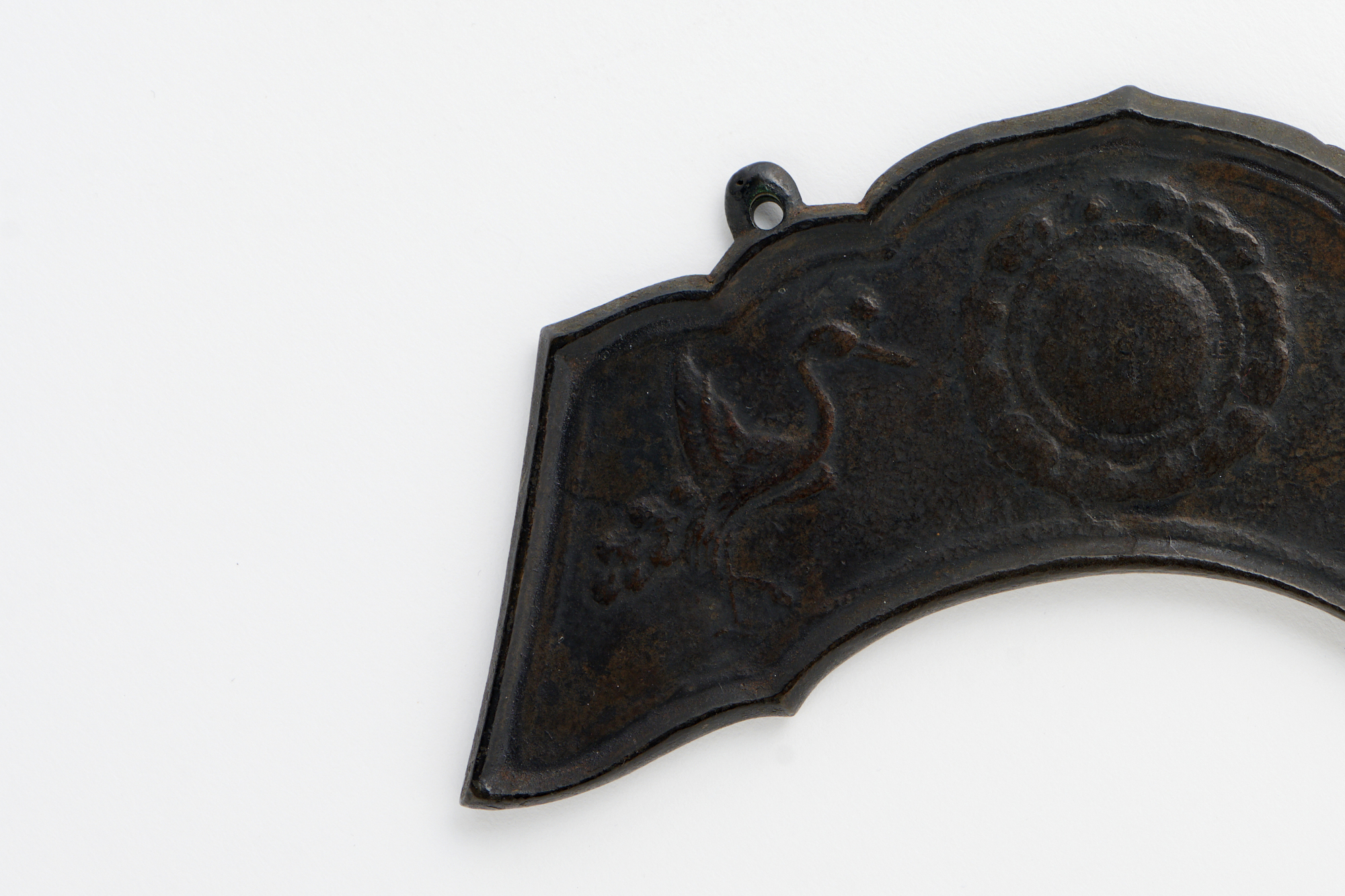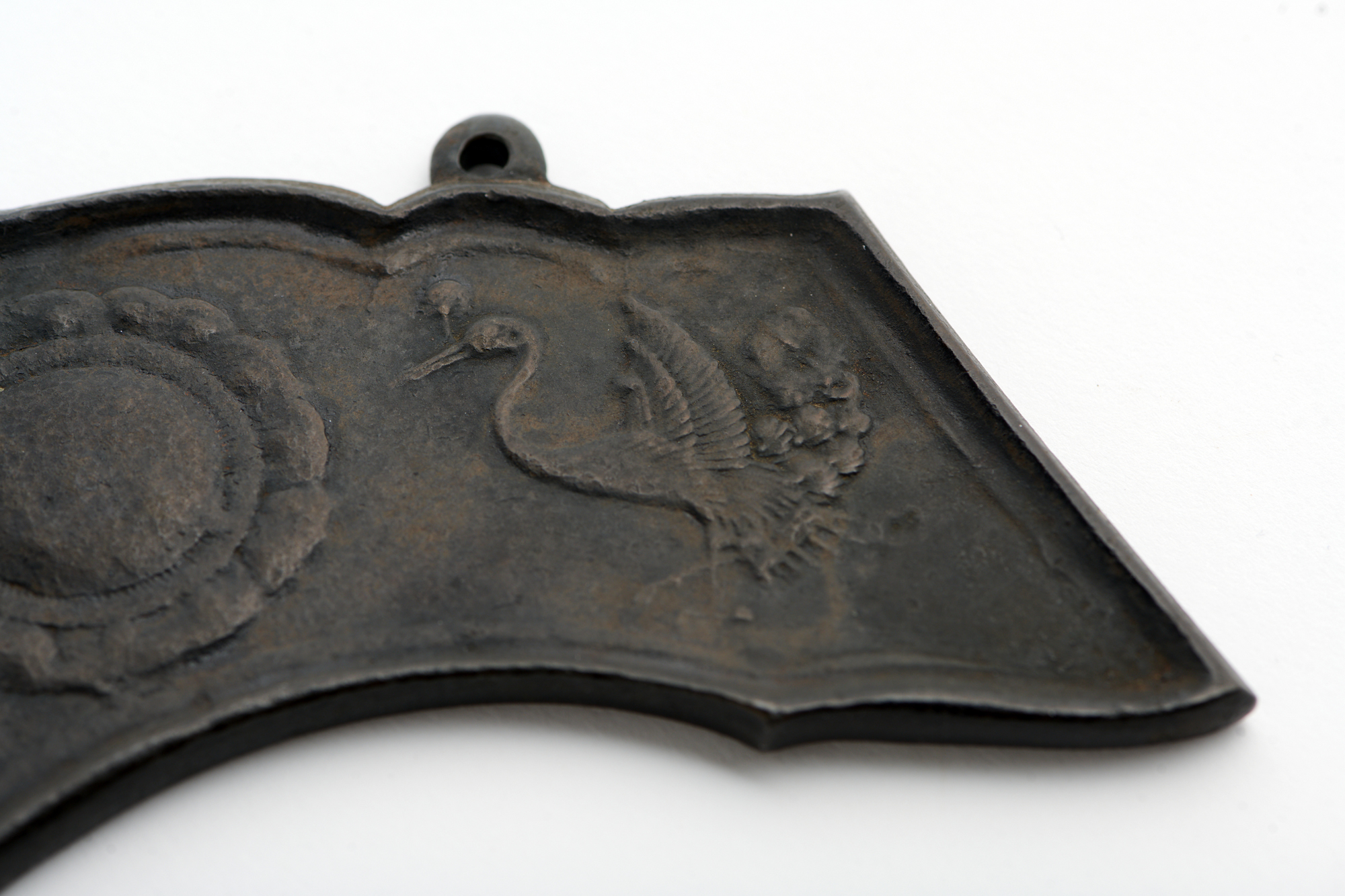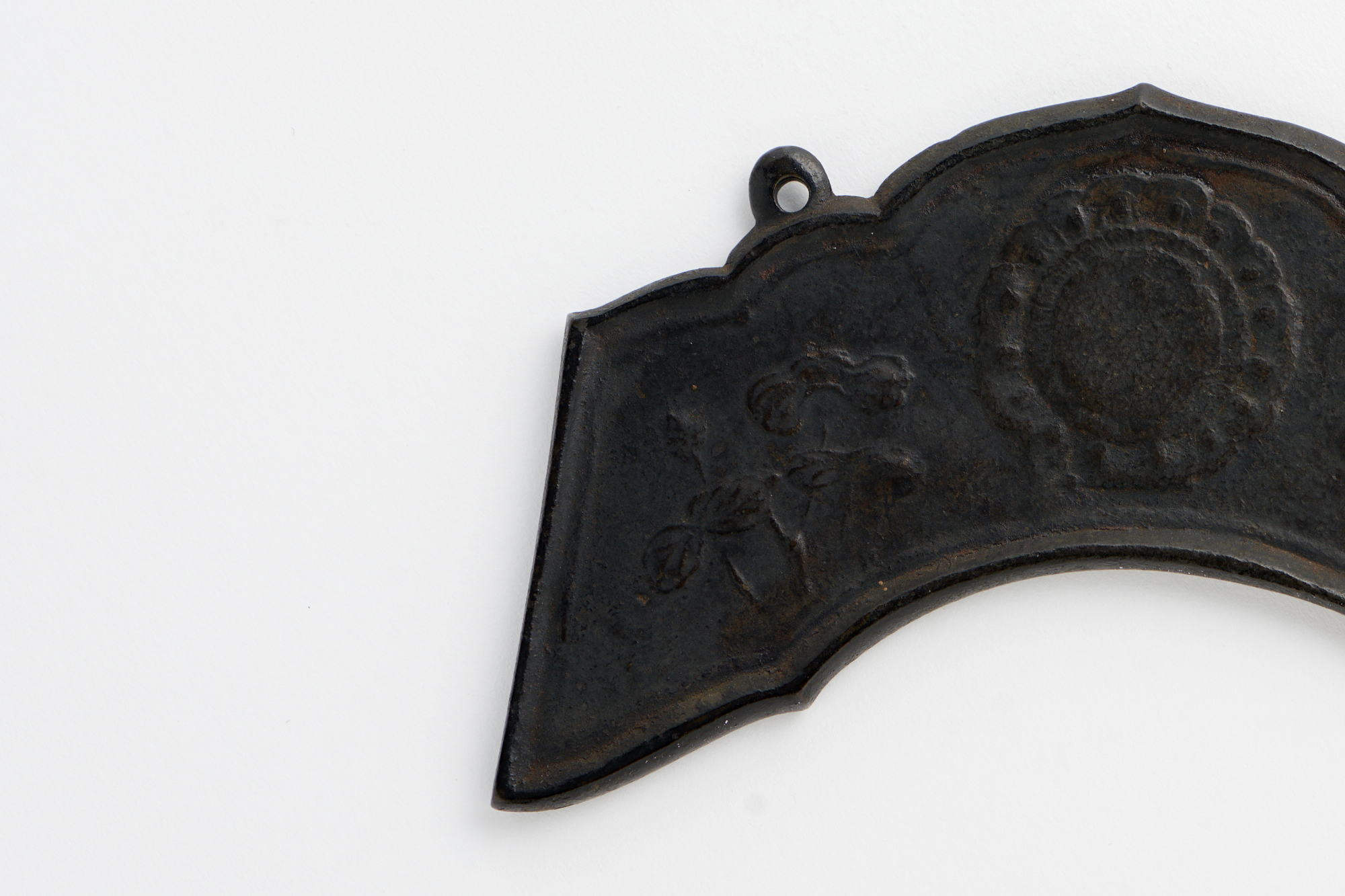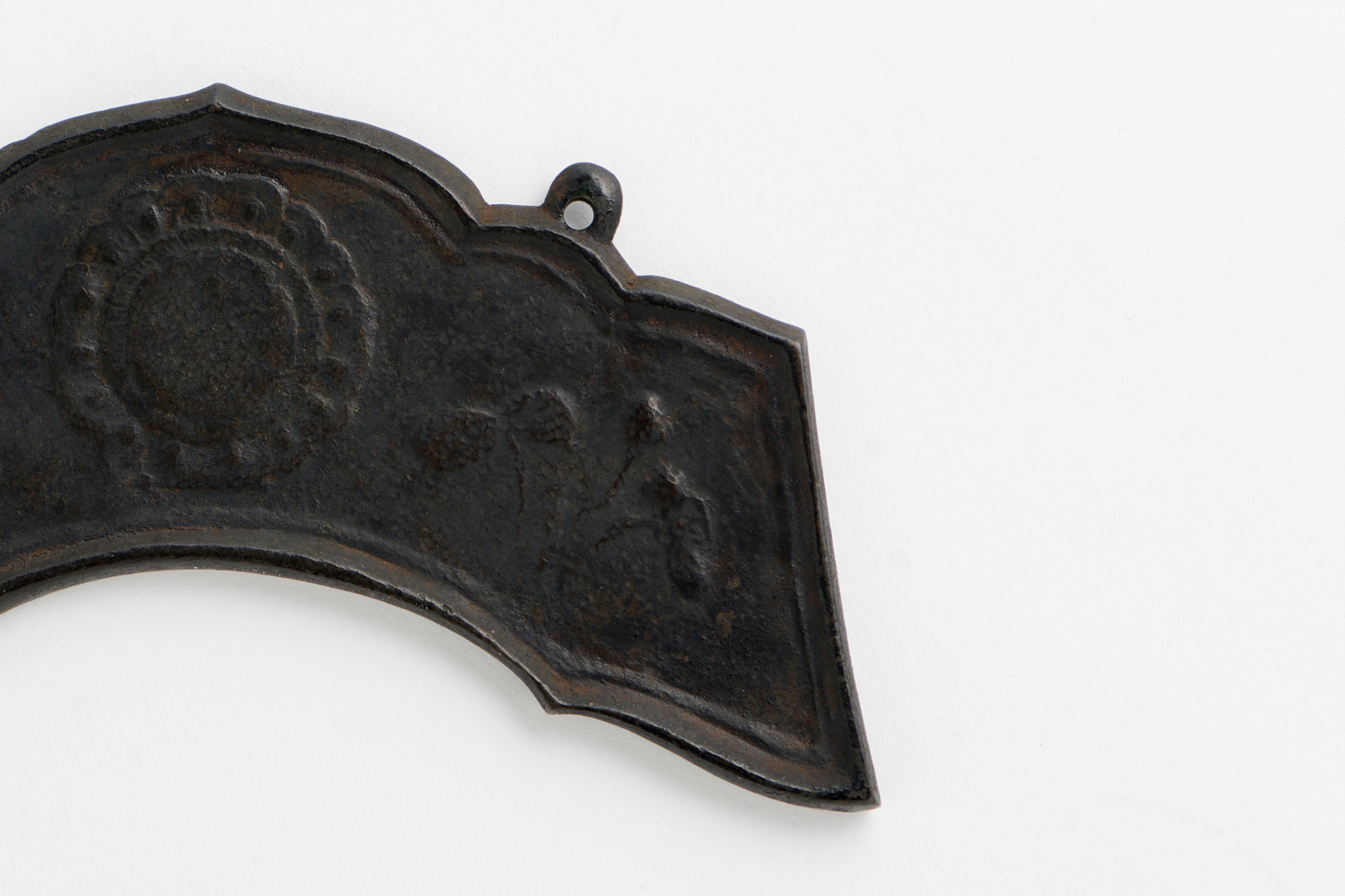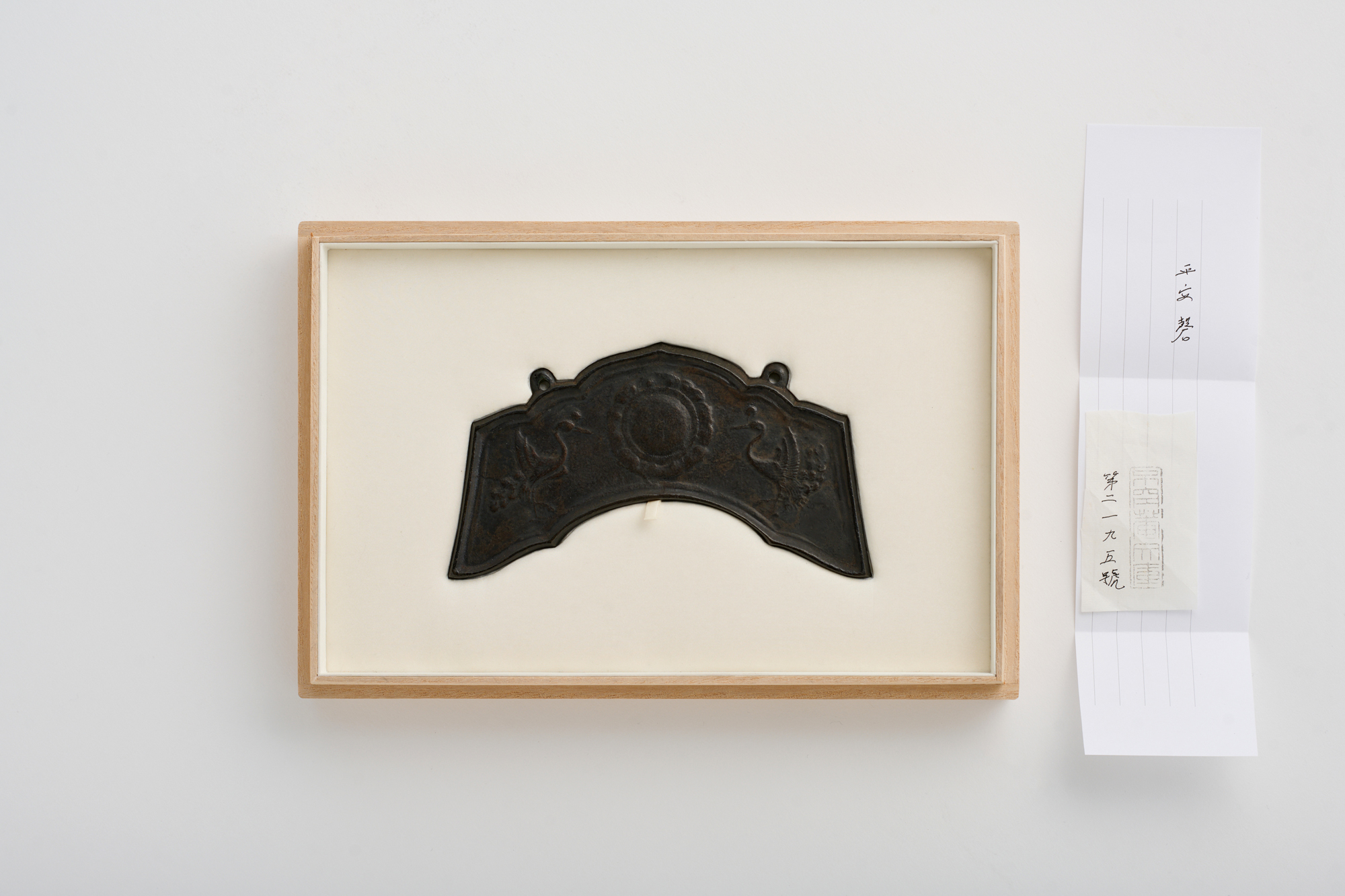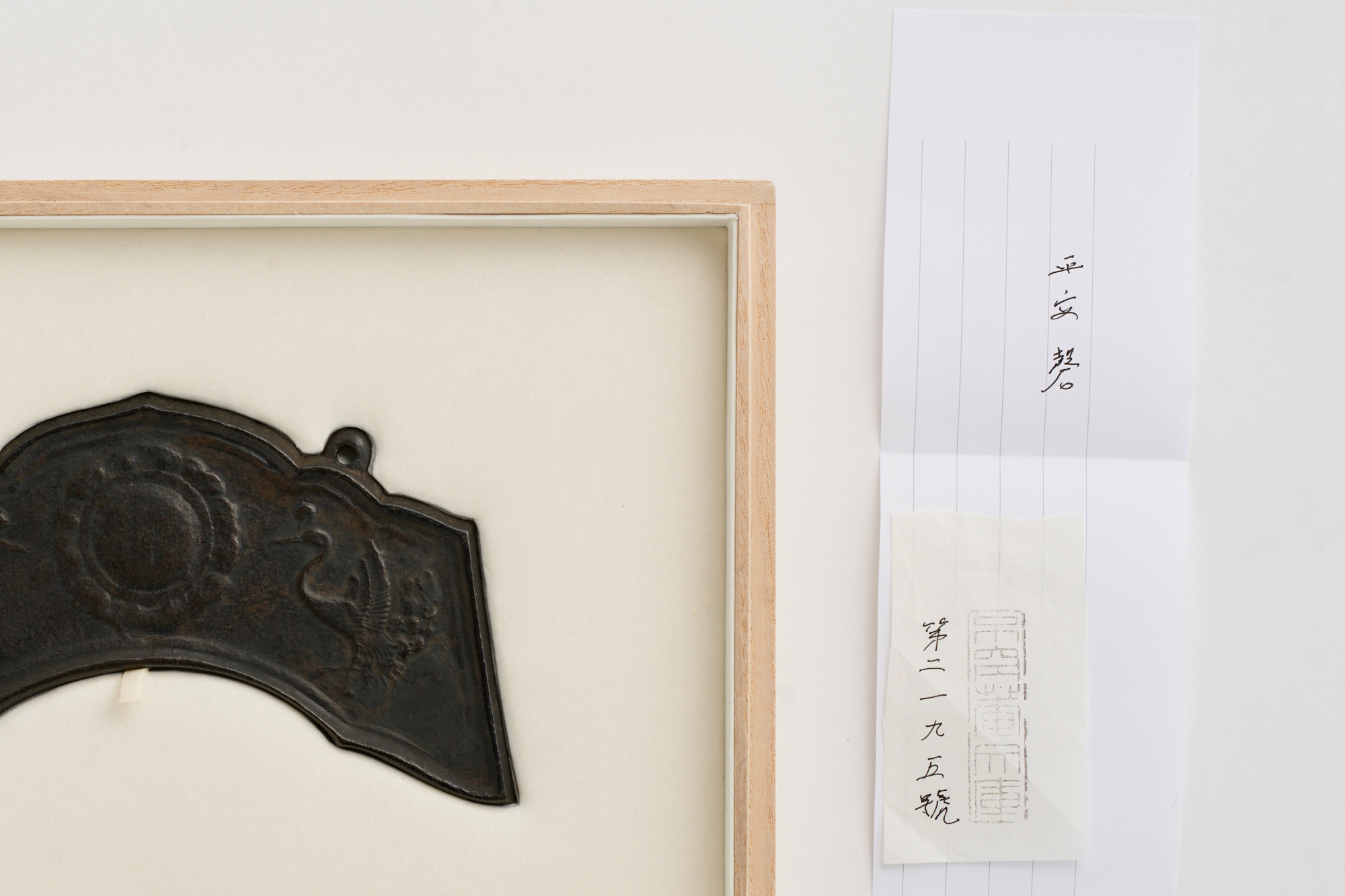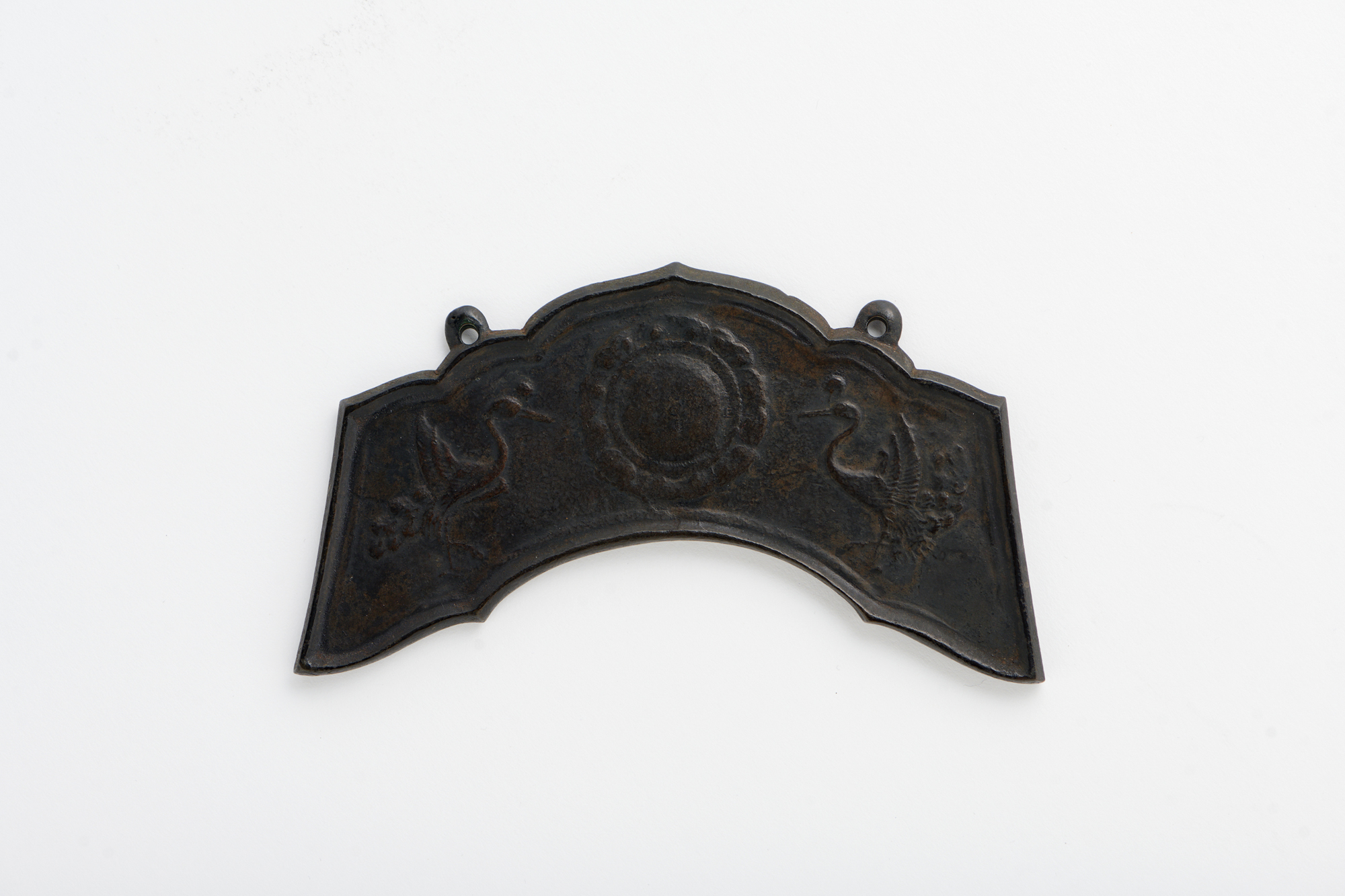
馨
Kei (Bronze Gong)
Completed
- Period
- Heian period (12th century)
- Provenance
- Dr. Hikari Matsuda
- Sizes
- w. 158mm
- Accessories
- Harikomi box (Finished by specialized artisan)
Kei are ceremonial and practical objects used in Buddhism to signal chanting of sutras. Kei originated from percussion instruments and were also used in performances of court music in ancient China. Domestic production of Kei began in the Nara period. In the Heian period, Kei became essential tools in esoteric Buddhist temples.
This piece is thinner and smaller in size than Kei manufactured in the medieval period. Although the casting is not particularly sharp, one can clearly discern a lotus-shaped pedestal in the center of both the front and back sides of the piece. There are two peacocks on the front side with lotus flowers cast on the back. Designs where the tail of the peacock is raised on the right side are often seen in relics from the late Heian period, while the lotus flowers on the back give off a sense of gentleness typical of the Heian period.
This Kei is part of the collection of Hikaru Matsuda, a renowned researcher and collector of Buddhist art. The piece was featured in a series titled “The Supporting Cast of Buddhist Art” in the March 2017 issue of Chiisana Tsubomi, a popular art and antiques magazine. Included with the Kei is a collection tag and number in Matsuda’s handwriting and a stamp of ownership indicating the item was owned by him.
The piece is in very good condition with no noticeable damage. The wear and tear of the piece is natural and consistent with its age. Kei dating back to the late Heian period (12th century) are extremely rare and almost never come on the market. As such, the piece deserves special consideration.






